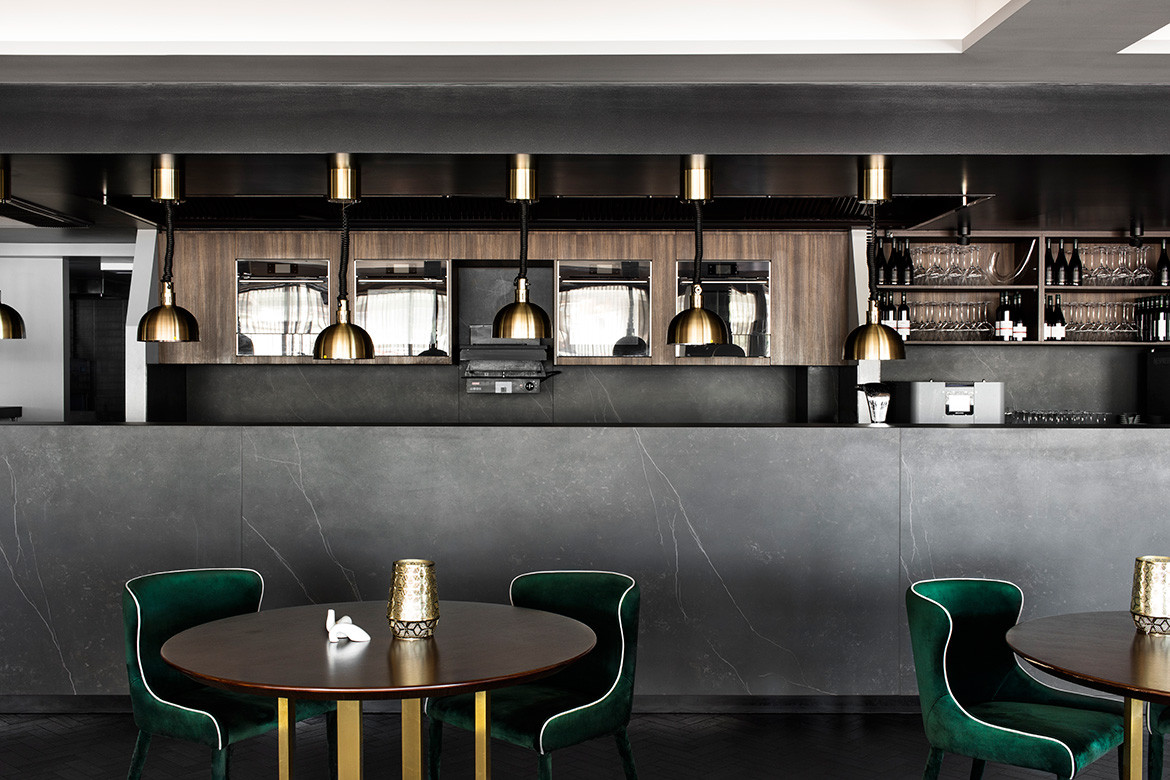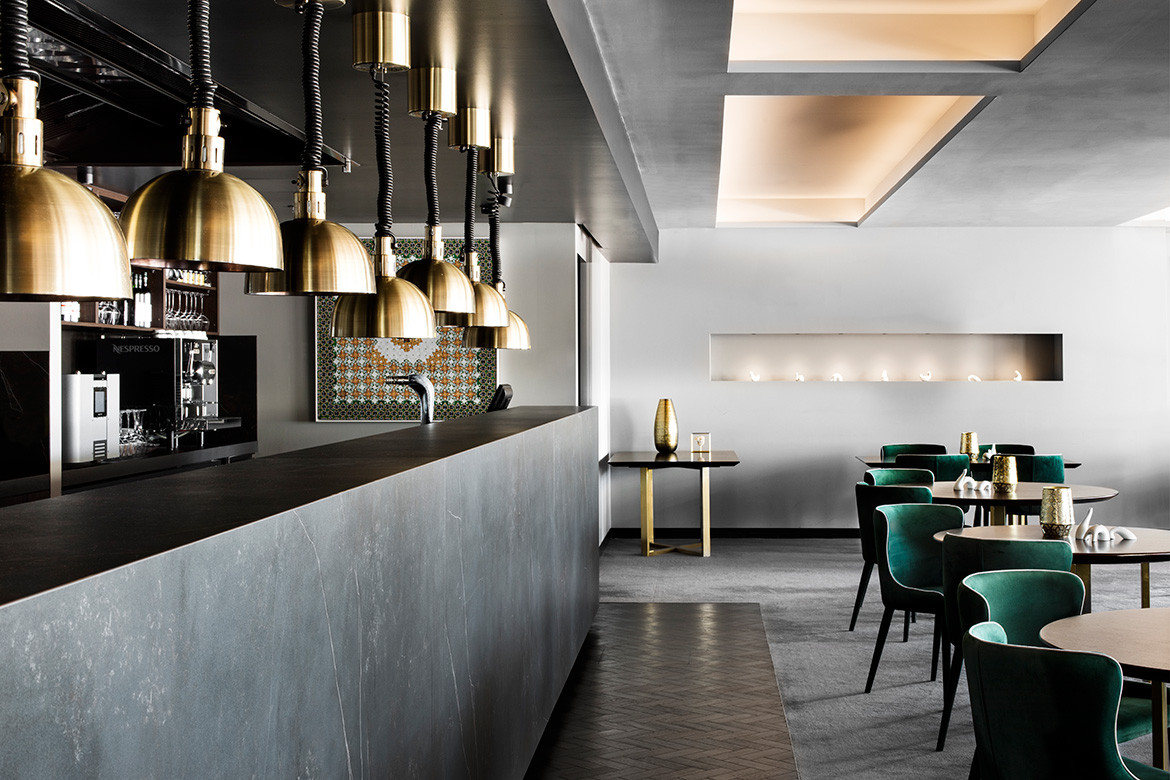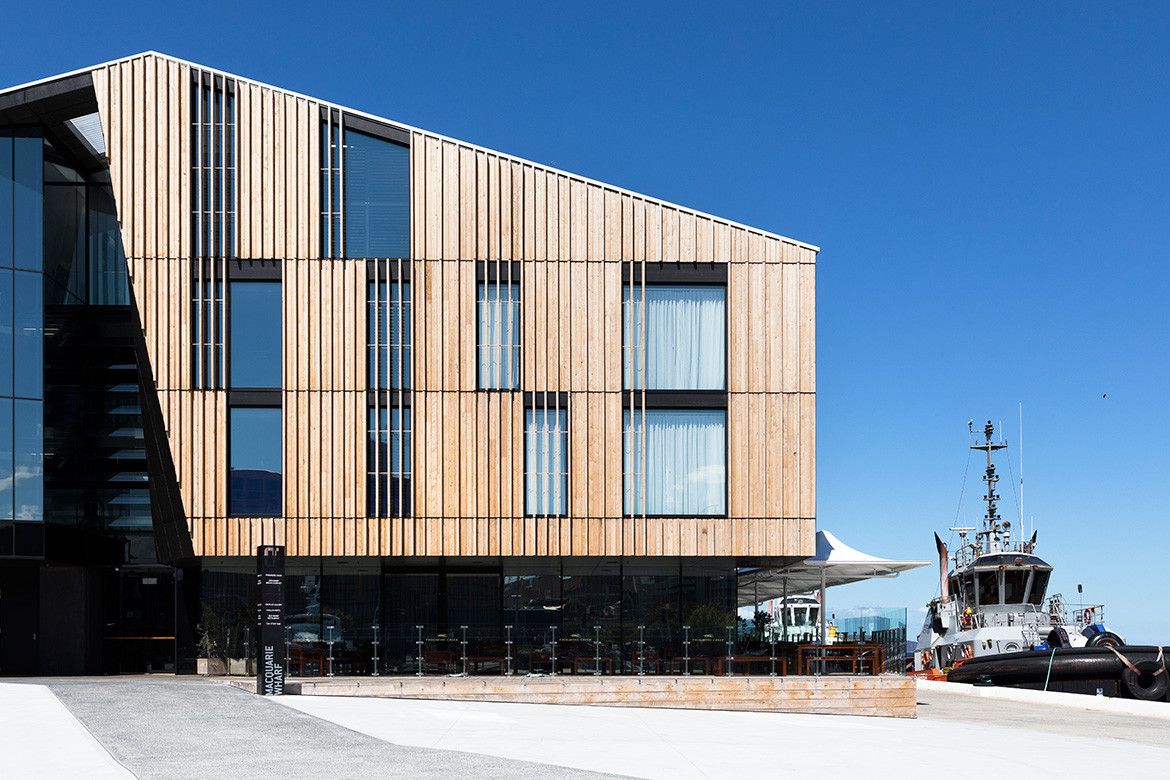Comfort is a special thing. It also shouldn’t be underrated in settings outside of the home. Your favourite coffee spot, for example, will no doubt have great food but also a certain amount of comfort that makes it that much better.
When Frogmore Creek set out to open a new restaurant in the heart of Hobart, the team brought this same way of thinking. It needed to be a restaurant that would speak to the brand values and give its patrons a sense of luxury, with a welcoming embrace.

The design team was comprised of Frogmore Creek’s CEO James Skabo, the marketing and brand director Shelley Temata, and executive chef Ruben Koopman. The trio oversaw every aspect of the project – selecting and finalising all the details from the furniture to the custom-made cutlery and high impact finishes.
But a distinctive challenge arose in the process. As a functioning restaurant, the material selection needed to meet commercial grade standards, while not overpowering the desired elegant feel.

The 475-square-metre venue features a mix of spaces and an exposed kitchen, which would traditionally be kitted out with swathes of stainless steel. The design team decided to steer clear of the more cold-looking stainless steel and instead used a range of Dekton surfaces that could endure the use of a commercial kitchen while giving the finish of a home kitchen.

The result is that all the commercial elements are concealed from view and the space has a polished, elegant and plush finish. The atmosphere is comfortable and relaxed, yet exudes a high-end, exclusive feel.
From the comfortable seating arrangements in the front bar, all the way through the more formal dining area, The Lounge by Frogmore Creek is a space that invites you to relax and enjoy some true Tasmanian hospitality. It’s like a beautiful home away from home.
Frogmore Creek
frogmorecreek.com.au
Cosentino
cosentino.com/en-au
Dissections
Project: The Lounge, Frogmore Creek
Location: Hobart, Tasmania, Australia
Completed: October 2017
Design: Shelley Temata, Marketing and Brand Manager, Frogmore Creek; Ruben Koopman,
Hospitality Director and Executive Chef, Frogmore Creek
Constructor: Voss Construction
Cosentino materials:
Kitchen and bar benchtops: Dekton® Sirius; 12 mm thick; 60 sqm (30 sqm each)
Kitchen pass, servery and splashback: Dekton® Kelya; 12 mm thick; 30 sqm
Bar benchtop: Dekton® Sirius; 12 mm; 5 sqm
Front of bar: Dekton® XGloss Blaze; 12 mm; 12 sqm
Dining tables: Dekton® Trilium; 20 mm; 9 sqm.
Bathroom walls: Dekton® Spectra, 8 mm; 40 sqm
Bathroom benchtops: Dekton® Sirius


Want more kitchen inspiration? Step inside the home of one of Australia’s most popular food bloggers.

